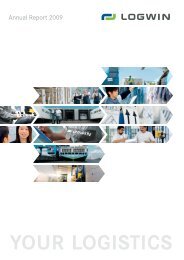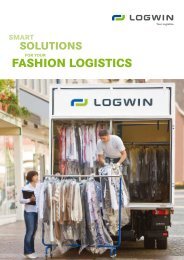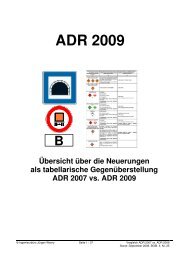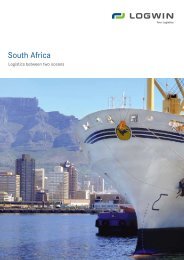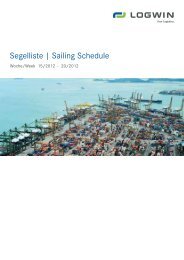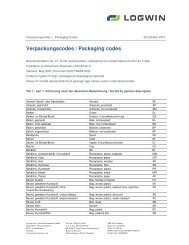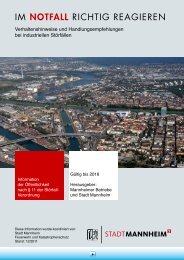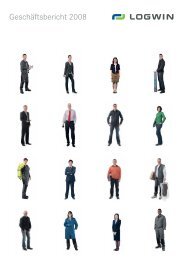Logwin: maximum data quality with e-freight
Logwin: maximum data quality with e-freight
Logwin: maximum data quality with e-freight
Create successful ePaper yourself
Turn your PDF publications into a flip-book with our unique Google optimized e-Paper software.
Article 5 October 2010<br />
Must: everyone joins in<br />
Despite the benefits of e-<strong>freight</strong> listed above, it is not enough <strong>with</strong> paperless processing for the customer<br />
to request e-<strong>freight</strong> and the logistics service provider to provide it. “In order to be able to perform end-to-<br />
end paperless air <strong>freight</strong> transport all parties involved must be equipped for it and must be willing to<br />
adopt it”, explains Andy Nutz, Director Information Technology at <strong>Logwin</strong>. ” Besides the sending and<br />
receiving forwarding agents, this also involves airports, airlines, ground handling companies 1 and<br />
customs.” If just one of the parties has not yet made the transition to e-<strong>freight</strong>, a printed document will<br />
be necessary at some stage along the process chain. If this is missing, there could be problems <strong>with</strong><br />
customs or liability for a shipment that has arrived at its destination. E-<strong>freight</strong>-capable therefore means<br />
two things: the technical standard must be available and there must be a willingness to recognize the<br />
virtual electronic document in the same way as the air waybill and accompanying paper documents (e.g.<br />
packing list, commercial invoices etc.) in the past.<br />
And yet how can logistics personnel and airport and customs staff see whether <strong>freight</strong> <strong>with</strong>out any<br />
accompanying documents is e-<strong>freight</strong> or whether the <strong>freight</strong> documents are simply missing? Appropriate<br />
labeling will make this clear in future. A list of the airlines, logistics companies and customs agencies as<br />
well as the destinations where e-<strong>freight</strong> is already recognized can be accessed on the IATA website.<br />
However, it is necessary to check the routes closely since e-<strong>freight</strong> capability also depends on the<br />
connections in questions and the transit stops.<br />
Day-to-day experience reveals<br />
IATA (International Air Transport Association) launched its so-called “ Message Improvement Program”<br />
(MIP) shortly after the start of the project in mid-2007 in order to further increase the acceptance and<br />
<strong>data</strong> <strong>quality</strong> of e-<strong>freight</strong>. The participants are airlines and logistics and transportation companies. The MIP<br />
allows the <strong>quality</strong> and <strong>data</strong> of all parties involved in the process to be checked. Participants report<br />
regularly on their experience <strong>with</strong> e-<strong>freight</strong> concerning such aspects as completeness of <strong>data</strong> records,<br />
transmission time or special occurrences. The MIP documents the reports, evaluates them in monthly<br />
statistics and makes them available to the participants of the program. “It’s an excellent way of<br />
continuously improving the processes” , praises Volker Hoebelt. “ As a logistics service provider for whom<br />
1 Staff responsible for <strong>freight</strong> processing between the terminal and the aircraft.<br />
2



